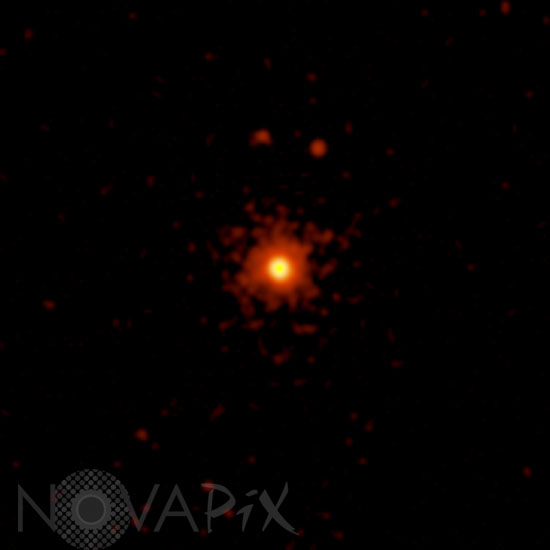Photo Agency - Astronomy - Space - Nature

Proxima Centauri in X-Ray
author: Nasa/Cxc/Sao/Novapix
reference: a-eto01-00100
Image Size 300 DPI: 20 * 20 cm
Chandra and XMM-Newton observations of the red dwarf star Proxima Centauri have shown that its surface is in a state of turmoil. Flares, or explosive outbursts, occur almost continually. This behavior can be traced to Proxima Centauri's low mass, about a tenth that of the Sun. In the cores of low mass stars, nuclear fusion reactions that convert hydrogen to helium proceed very slowly, and create a turbulent, convective motion throughout their interiors. This motion stores up magnetic energy which is often released explosively in the star's upper atmosphere where it produces flares in X-rays and other forms of light. The same process produces X-rays on the Sun, but the magnetic energy is released in a less explosive manner through heating loops of gas, with occasional flares. The difference is due to the size of the convection zone, which in a more massive star such as the Sun, is smaller and closer to its surface. Red dwarfs are the most common type of star. They have masses between about 8% and 50% of the mass of the Sun. Though they are much dimmer than the Sun, they will shine for much longer - trillions of years in the case of Proxima Centauri, compared to the estimated 10 billion-year lifetime of the Sun. X-rays from Proxima Centauri are consistent with a point-like source. The extended X-ray glow is an instrumental effect. The nature of the two dots above the image is unknown - they could be background sources.
Keywords for this photo:
2000 - ASTRONOMY - CENTAURUS - CHANDRA - DWARF - FLARE STAR - M STAR - PROXIMA CENTAURI - RED DWARF - STAR - VARIABLE STAR - X - X-RAY -
Contact : Stéphane Aubin +33-(0)9-51-26-53-76
© Novapix - All rights reserved


